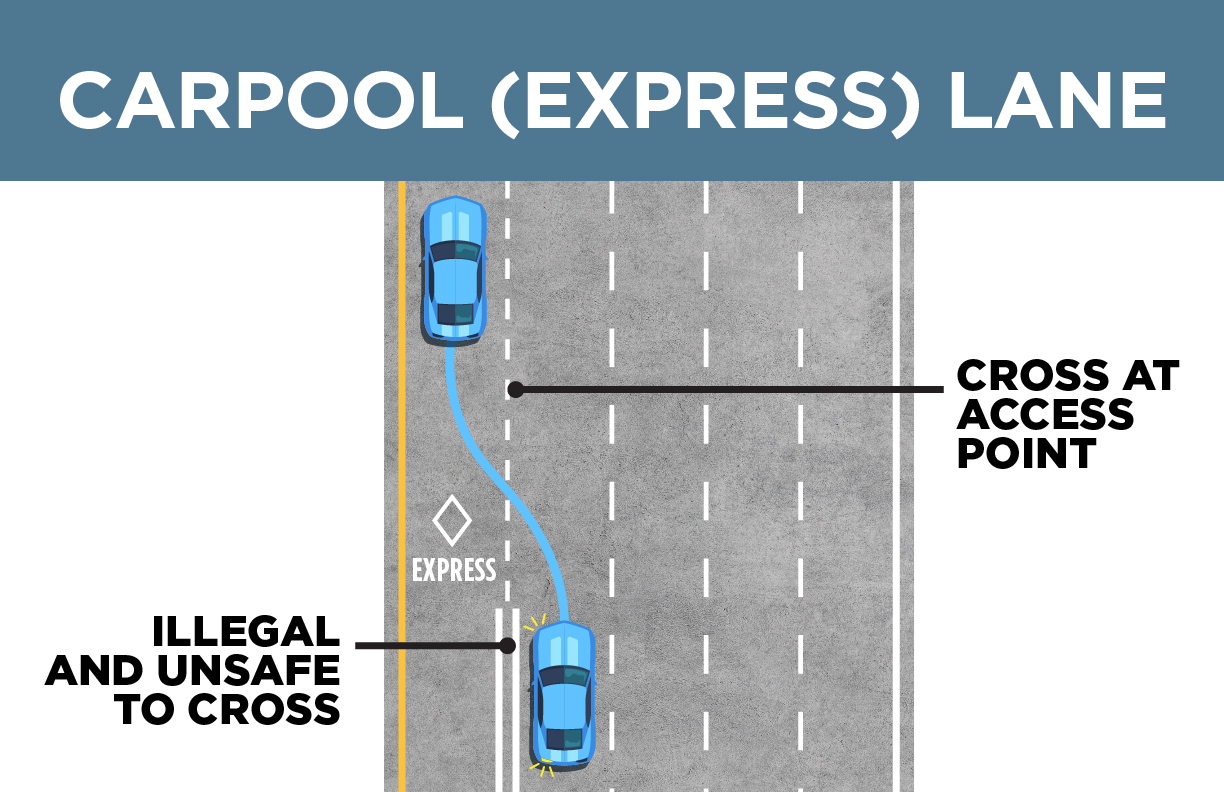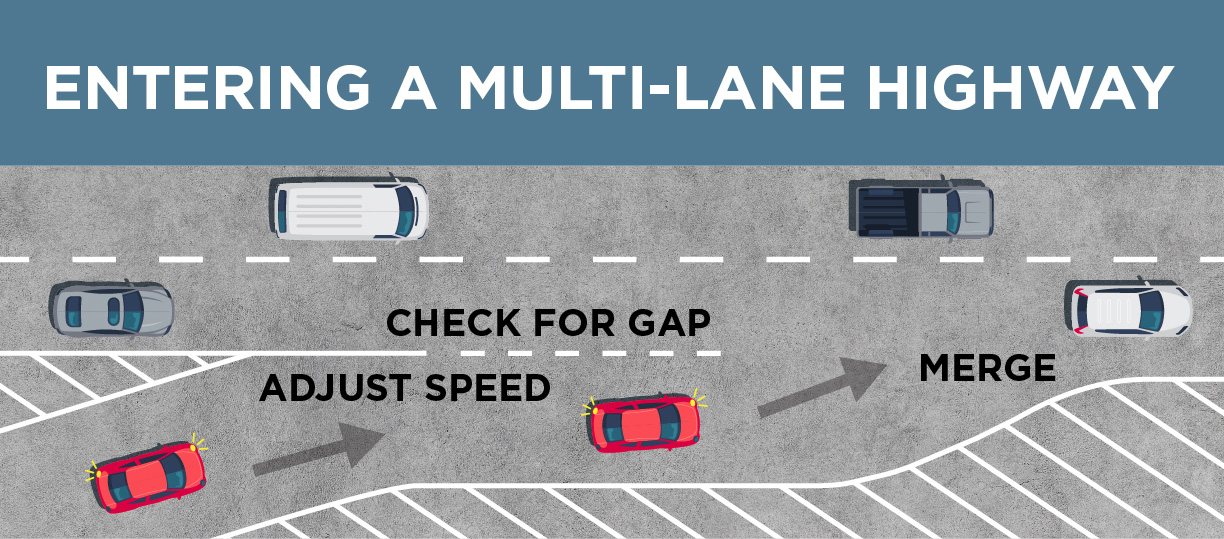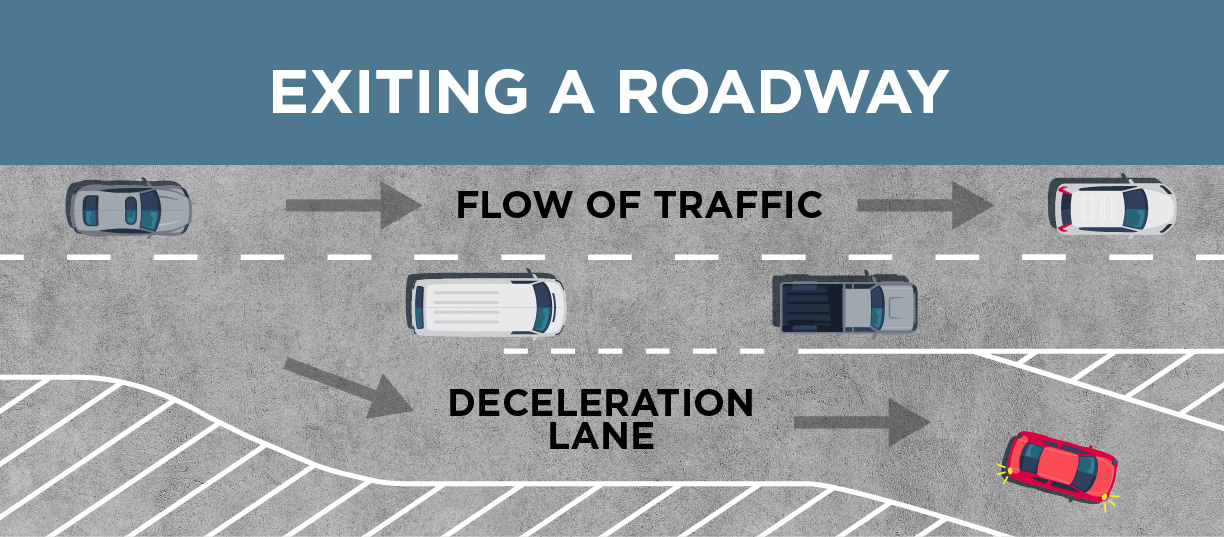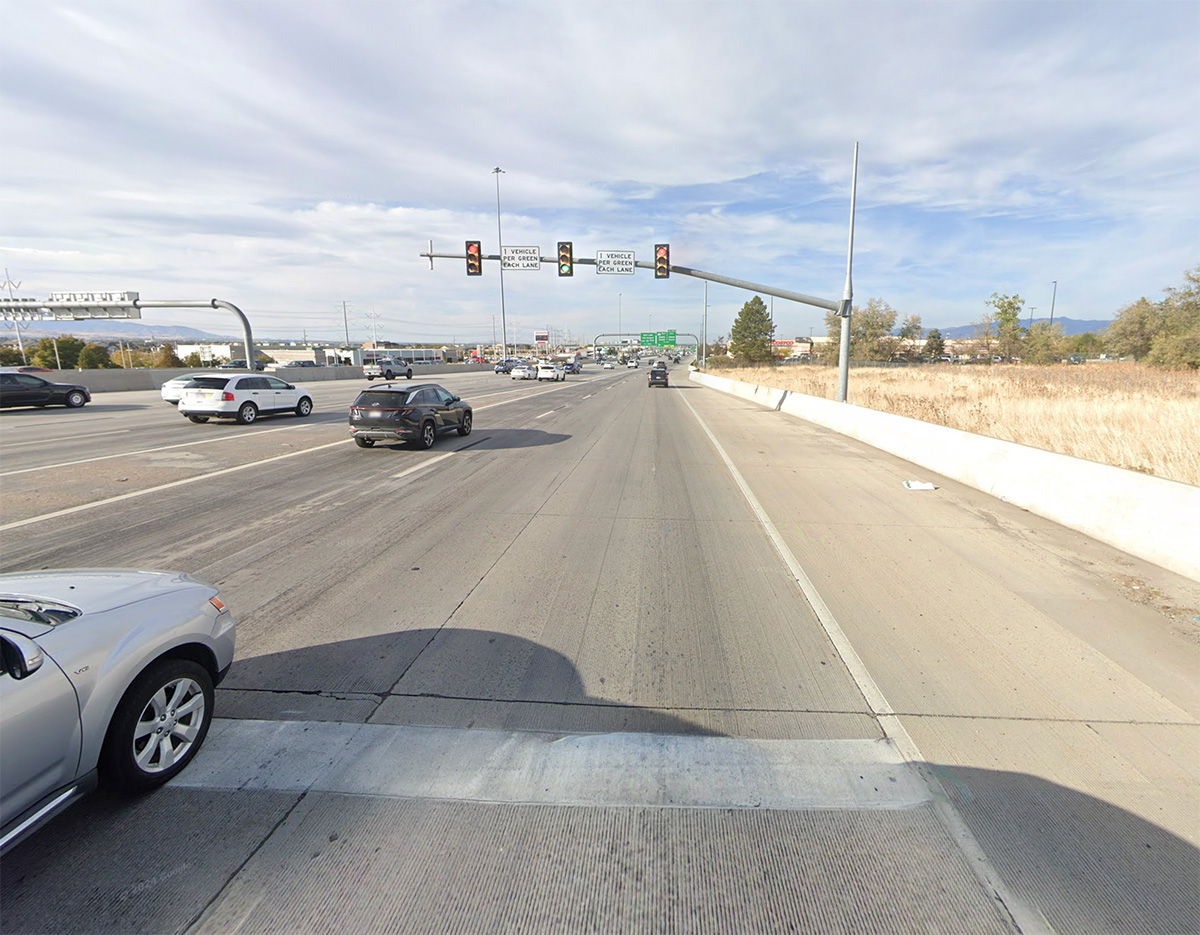Section 9: Rules of the Road
Freeway Driving
WHEN DRIVING ON THE FREEWAY:
- You should always maintain at least two (2) seconds following distance behind the vehicle ahead of you. Under adverse conditions, the time needs to be increased.
- Do not make U-turns on the freeway—it is illegal.
- Do not drive in the emergency lane—the area of the freeway on the outside of the solid white line is for emergency use only. Passing another vehicle or stopping to pick up passengers in this lane is illegal.
- You should generally drive at a speed similar to that of other cars around you. However, you may not legally drive faster than the posted speed limit. This also applies to getting off of the freeway.
- Do not use an entrance ramp to exit the freeway—it is illegal, even in a traffic jam.
- Do not pass unless it is safe.
- A vehicle traveling in the left lane must move safely to the right when approached from behind to prevent impeding traffic.
- Change lanes only to pass, get off the freeway or enter the correct lane for an upcoming route separation in the freeway.
Carpool (Express) Lanes
Express lanes are travel lanes on I-15 dedicated for high-occupancy vehicles. The express lanes may be used as a carpool lane for those vehicles with two (2) or more persons for free. Motorcycles, buses, and vehicles with registered clean fuel vehicle decal (C decal) may also use the express lane free of charge.
It is illegal to cross a double white line. Moving in and out of the carpool lane is not allowed except in specific locations (called access points) with white dotted striping rather than solid lines. Access points are about 3,000 feet long and located at nearly every interchange along the express lanes. Vehicles are recommended to exit the express lanes one interchange before the desired exit.

C Decals
Entering a Multi-Lane Highway

Exiting a Roadway

Ramp Meters
The population growth in Utah has increased the number of vehicles using our freeways, creating more frequent congestion and unpredictable travel times. Ramp meters help prevent slowdowns and “stop-and-go” conditions that freeway travelers frequently encounter at certain times of the day. There are currently some ramp meters along the Wasatch front.
Ramp meters look almost like traffic signals you see at intersections, except they only have red and green lights that alternate. Ramp meters are placed on the freeway onramps, and allow only one (unless posted differently) vehicle to pass each time the green light comes on.
Ramp metering occurs only when many vehicles are attempting to enter the freeway. A lighted “meter on” sign at the entrance to an on-ramp will indicate when ramp metering is in effect. If the “meter on” sign is not illuminated, drivers can enter the freeway as usual. Because the “meter on” sign is at the entrance to the freeway on-ramp, drivers will be able to decide whether to enter the on-ramp or take an alternate route and avoid having to stop for the ramp meter.

Runaway Vehicle Ramps
Single-Point Urban Interchange
These interchanges can be confusing. However, some things may help drivers when passing through a single-point urban interchange. Dash lines have been added to these interchanges to guide drivers into the proper lanes. There are also “wrong way” signs on the off-ramps and on-ramps to help drivers avoid entering a ramp against traffic.
It is legal to make a U-turn from the off-ramp at a single-point urban interchange and re-enter the freeway as long as you face a green arrow when you begin the maneuver. When you re-enter the freeway on the on-ramp, you will face a red arrow. The red arrow is intended for the traffic adjacent to the light. Do not stop your vehicle in the middle of the intersection; complete the maneuver once initiated.
If a power outage occurs, the single-point urban interchange is not handled like a four-way stop. It is important to proceed with extreme caution and courtesy. Most single-point urban interchanges will be supported by battery backup. However, if there is no a battery backup, an officer will be dispatched to the scene as soon as possible for traffic control.
